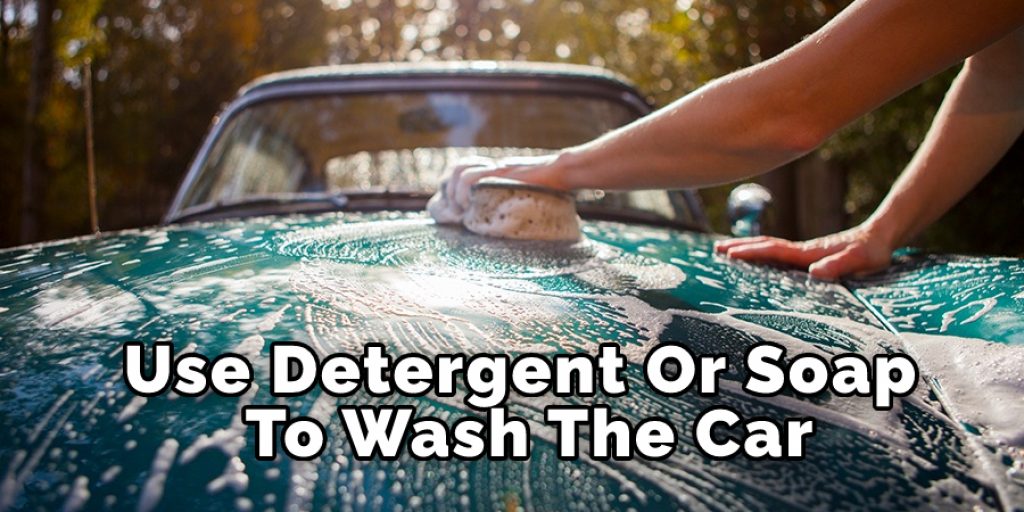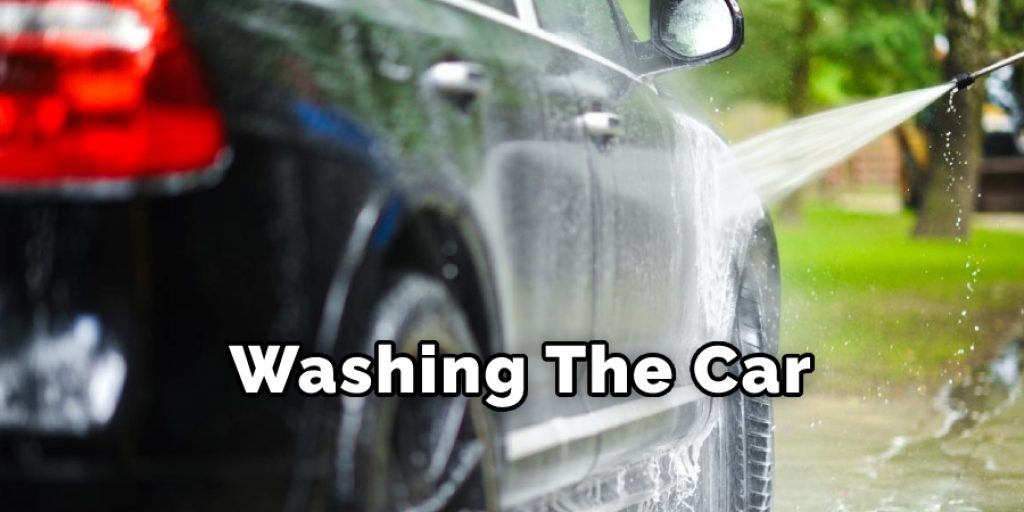How to Remove Tree Sap From Car With WD40
Introduction:
Tree sap can be a tough stain to remove from car paintwork, and it’s well worth taking time to understand what tree sap actually is. Tree sap consists of resin produced by conifer plants (such as pines or Douglas firs) that has been mixed with plant saps, enzymes, and water. It offers the trees in question some protection from insects and disease, which is why it’s so tenaciously sticky when spilled onto car paintwork.

The best way to prevent this from happening, of course, is to avoid driving under trees! But we all know that’s not always possible, especially on those long summer road trips where you’ve stuck in tourist traffic miles away from your destination! Sometimes you can use WD40 for removing tree sap. Today I am going to discuss a process on how to remove tree sap from car with WD40. So let us get started.
Step-wise Guide on How to Remove Tree Sap From Car With WD40
Step 1: Mark the Place
• The first thing you should do is move the car to a well-lit, dry place and clean the tree sap. If it is still wet, try drying it off with a cloth or paper towel.
If the tree sap has dried up:
• Use WD40 and cover with an old rag and scrub it vigorously until all sticky residues come off. Rinse very lightly and see if there’s any sticky residue left on the vehicle surface. Would you please repeat this step until you are satisfied that all of it has been removed from the car’s paint job?
Step 2: Wipe Down with Some Clean Cloth
Once you have removed most of the stickiness using WD40, you should wipe your car down with a clean cloth. This will help to avoid WD40 coming into contact with the car’s exterior paint job, which is important if you want to keep your vehicle looking good.

Step-3: Waxing Your Car
As soon as possible, after removing tree sap from your car using WD40, it would be best to wax your vehicle.
If there is still some sticky residue left over from the sap, this could delay the waxing process until it evaporates, or you can use a washing agent to get rid of it. Remember not to wax in direct sunlight because this may cause streaking when it dries up and removes excess polishing oils. It would also be advisable not to expose your car under direct sunlight or in a scorching place for long periods of time when it’s wet because this can lead to discolored and faded paint as well.
Step 4: Repeat the Waxing Process Once it has Dried up
You must repeat the waxing process once your car dries off from being washed to prolong the shine and life of your vehicle’s paint job.
WD40 is a product that helps to remove leaf adhesives, sealants, tar-based products, oil spills on cars and other surfaces. This product makes it easier to remove these sticky substances and residue.
You Can Check It Out to Clean Engine Bay With Wd40
Precautions While Performing How to Remove Tree Sap From Car With WD40
- First of all, you must use a gentle detergent or soap. But don’t apply too much pressure because this could break the paint layer of your car (and can also take away some paint from your car, thus exposing bare metal).
- If you are using any abrasive solution to wash away tree sap from your car, then do it sparingly and gently on a small area until you get used to how fast that particular product is removing the sap.
- You should be very careful while you soak up any excess fluid as it can damage soft surfaces if left in place for long periods of time. Use absorbent paper towels or cotton rags rather than using cloths which will attract fibers.
- Try to wash your car as soon as possible because sap attracts insects and is sticky. Once dried, it can become difficult to remove from the surface.

Frequently Asked Questions
What is WD40?
WD stands for Water Displacement. WD40 is a lubricating and penetrating oil that can be used for waterproofing, rust prevention, and freeing up stuck parts like nuts and bolts. The discovery of WD40 happened by accident when a chemist from the 3M (Minnesota) company was working on creating a formula to stop corrosion in nuclear weapons.
He didn’t just create any old formula – he created a chemical called FC-430. The result was two fluids that were irritating to the skin, so they tried it on their plants instead. It worked! They found out that the sticky tree sap that had always been plaguing them could be removed with this stuff.
How to Wash My Car?
- Never underestimate the value of good washing soaps and shampoos and a quality car wash mitt. If your protecting surfaces with paint sealant or wax, maintenance of the appearance of these products will assist in making sure they don’t depart from your vehicle’s body, especially if you have to deal with tree sap removal.
I’ve been driving for 30 years now and constantly verify new automobile washes on vacation. Unfortunately, I had been recently at a leading national car clean shop chain, and their version of tree sap remover was pathetic! I walked away perplexed, alerting my spouse how dangerous it absolutely was since it didn’t operate in any way whatsoever. - Spray a lubricant/wax on your car before washing it to avoid damaging swirl marks. Use a microfiber towel to avoid excessive rubbing.
- Fill up your bucket with heated water and add some good quality car wash soap (I personally use Meguiar’s Gold Class Car Wash Liquid ); agitating the mitt just before washing each section of your vehicle is really important too, as it removes any silicone residue that may be present from paint sealant or wax. Please pay close attention to wheel barrels and calipers; they get neglected often!
- Use a soft, pliable mitt or sponge and go over the entire vehicle again in a circular motion. I personally like to use a microfiber mitt since it’s 100% polyester and thus will not scratch if you rub too hard with it! Just make sure that it’s damp, not dripping wet. This will help to remove any leftover dirt and debris from the vehicles surface.
- Make sure you rinse all of the soap off before drying your vehicle using 2 separate towels, one to wipe excess water from paintwork, wheels, etc., followed by a quality chamois leather which is essential for drying properly without leaving any streaks.
- If your car looks good but feels slightly greasy after washing, then apply some wax/sealant straight onto the car’s surface area where required and buff away within no time at all using a clean cloth. Lastly, remember that every time you wax or seal your vehicle, the surface will become slightly more prone to tree sap buildup and thus should require more frequent washing.

How Can Tree Sap Damage Your Car?
Tree sap can cause some serious problems for your vehicle if left untreated. For instance, it can damage paintwork and clog up car parts or components. Not only that, but if left unchecked, tree sap can also cause rusting on metal surfaces under the hood and elsewhere on your car. In short, it’s important to clean off tree sap as soon as you can to avoid any serious damage to your vehicle.
Is It Safe To Remove Tree Sap Without WD40?
Do you wonder if it’s possible to remove tree sap from cars without WD40? Yes, you can definitely do it, but the process will be different from the usual way. Our guide will help you with this, so read on and learn how to strip tree sap from your car quickly and safely.
# If you have a tree sap stain on your car, you can remove it yourself without having to go to a car service center. This will save you money.
# It would help save the environment: One of the biggest challenges these days is to keep our environment safe without putting any harm to it. If we learn how to remove tree sap from cars with WD40, this challenge will become easier to handle. We should all know that removing tree sap naturally is one of the best ways to let Mother Nature be free from pollution and other dangerous effects like air pollution etc.

Conclusion
I hope this article has provided you all the necessary information on how to remove tree sap from car with WD40. Ensure proper safety while performing the process and always seek professional help when the car gets damaged. Thank you and have a nice day!




